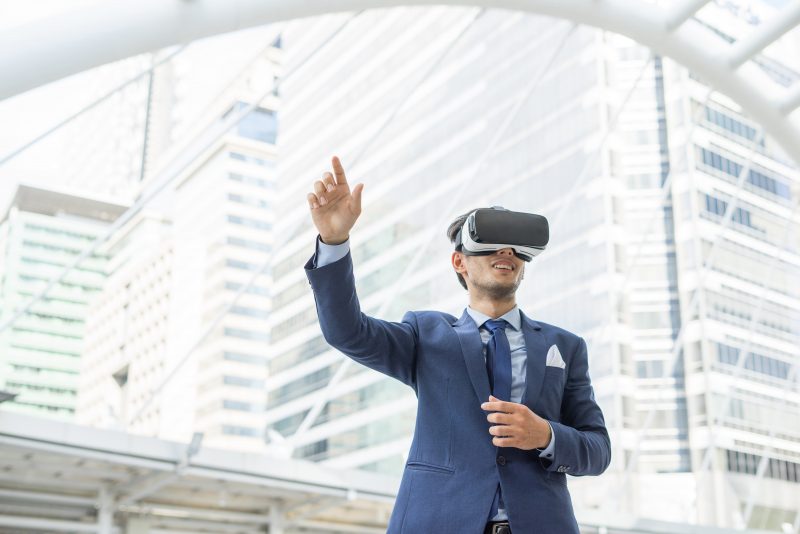Extended reality, mixed reality, virtual reality, augmented reality, VR, AR, MR, XR, Virtual reality, Augmented Reality, Mixed reality, extended reality, etc. It can be difficult to differentiate all these terms and acronyms, as well as to understand which is which and for what context.
We will now define all these paradigms.
Virtual Reality
First of all we will discuss Virtual Reality (or VR).
The latter is a fairly easy concept to understand. Indeed, virtual reality allows a user to be completely immersed in a new world. In this context, one no longer sees reality at all, personal landmarks no longer exist, the user is completely immersed in another reality and the sense of vision is altered.
With this type of alternative reality, individuals are able to perform actions that are impossible in reality. The laws of physics may no longer apply or, conversely, be completely realistic. Users can travel to a world that doesn’t exist, visualize objects or explore buildings that will exist in the future. It is possible to visit ancient locations, destroyed by the course of time, or ones which are completely imaginary.
After conquering the world of video games, virtual reality is now starting to integrate the world of training. Contrary to traditional training, virtual reality makes it possible to establish a link between theory and practice. The scenarization and immersion allow to simulate in a realistic way the conditions of a working environment and to save precious time usually dedicated to training.
There multiple applications: preventing risks on construction sites, training employees in cybersecurity risks, customer service, or even industrial machine maintenance.
Augmented Reality
We will now talk about augmented reality. We have two types of augmented reality families. First, what is called mixed reality, second, augmented reality.
The simplest example for augmented reality (RA or augmented reality or AR) is a device: the Google Glass. The latter allowed the information to be displayed on a very small screen. The information of augmented reality is not correlated to reality. It is therefore impossible, for example, for this type of augmented reality to overlap 100% with an object in reality, unlike mixed reality.
Mixed Reality
The major difference between mixed reality (MR) and augmented reality is that mixed reality includes the environment in which you work. Thus, in mixed reality it is possible to embed virtual elements in the real world. For example, you can put your next purchase on a table, a vase for example, or something less down-to-earth like a Pokémon. Very often people wrongly associate mixed reality to augmented reality.
Extended Reality
Finally, the last paradigm, the extended reality (XR or eXtended Reality).
Reality is what defines the set of everything that alters reality, whether directly or indirectly. All technologies that change the sense of vision are represented by extended reality. This term is often used in the professional world for industries, for video game platforms or by all hardware manufacturers.
If you would like more information on similar topics, it is strongly recommended to target your search with terms in English and acronyms in English.
By Gérald Dupont (Positive Thinking Company Consultant & CTO of Epekina)









